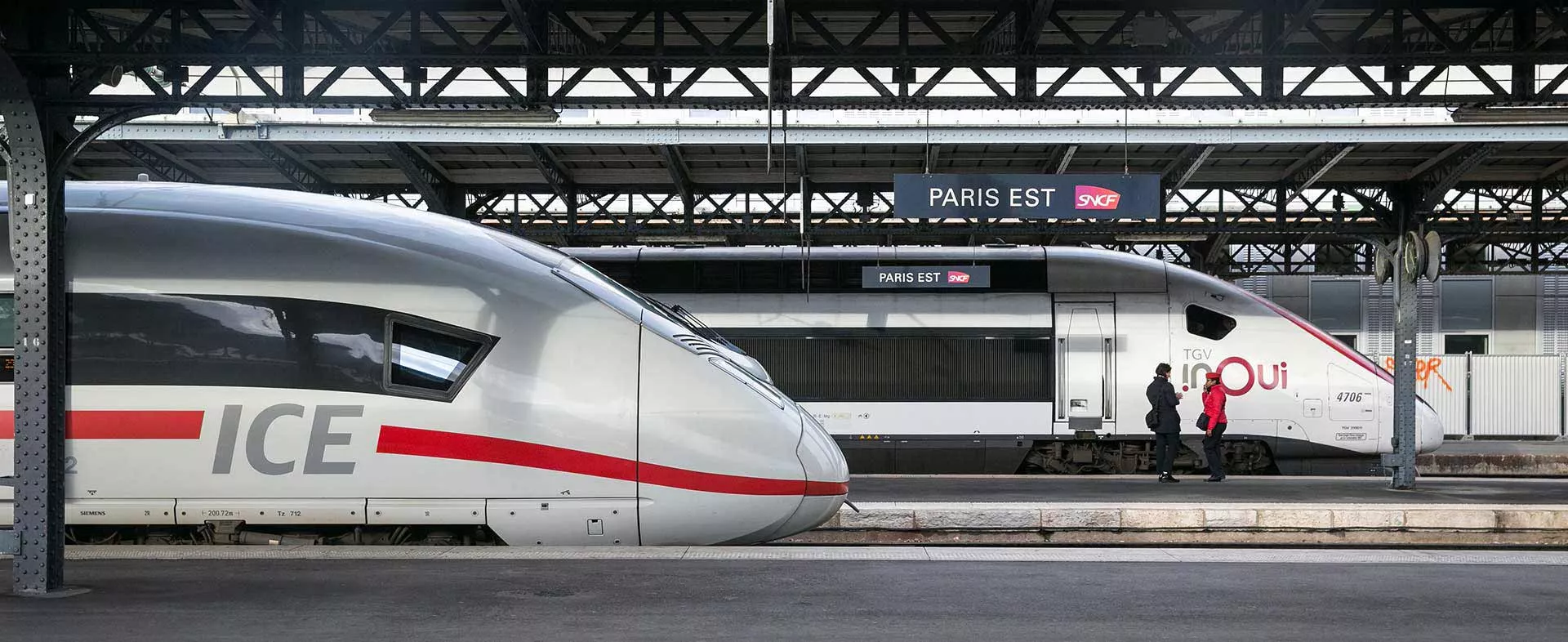
Rail is greener: advocating for trains
SNCF Group rallied some 30 European rail companies behind a joint pledge for “more attractive, sustainable, inclusive and innovative mobility”.
The European Railways Pledge (FR)
DOCUMENT
FrenchPDF • 320KB
Download The European Railways Pledge (FR) - French - pdf - 320KBThe European Railways Pledge (EN)
DOCUMENT
EnglishPDF • 333KB
Download The European Railways Pledge (EN) - English - pdf - 333KBIn February 2022, European rail companies submitted a joint declaration calling on the European Union and national governments to fight climate change by increasing the modal share of rail—a sustainable means of transport. Jérémie Pélerin, SNCF Group’s Director of European Affairs and our representative in Brussels, explains the pledge’s content and context.
What is in the pledge?
Jérémie Pélerin: The pledge aims to unite European rail players, the European Union and national governments in a push to increase rail’s modal share. Doing so will fight climate change by limiting transport-related emissions. Over 30 European rail operators and infrastructure managers made a public commitment to address four challenges for the industry—appeal, sustainability, inclusiveness and innovation.
What did they commit to?
JP: The signatories wanted to show that Europe’s rail players are already working hard to meet these challenges and are keen to do even more in the years to come for their customers, employees and the planet. The pledge also called on the European Union and its member states to help grow rail by taking practical steps, particularly by setting targets for modal shift and investing massively in the rail network to reach them.
What is the wider context of this pledge?
JP: The European Union is working on many issues that affect the rail industry. One of the most important is the Fit for 55 package, which aims to update climate and energy legislation to meet our new target of reducing emissions 55% by 2030—and that includes transport emissions. Another example is the regulatory update for the trans-European transport network, which will set specifications the network should meet by 2030, 2040 and 2050.
How can national and European ambitions be aligned?
JP:The two initiatives—doubling rail’s transport share in France over the next decades and publishing the European railways’ pledge—are closely related, and both are working toward the same goal. A modal shift to rail is a vital component of the fight against climate change, but the rail industry can’t get there alone. To succeed, we need massive financial and regulatory support from the European Union and member states.
Share the article